Adewale Adeyemo
Towards Enabling Dynamic Convolution Neural Network Inference for Edge Intelligence
Feb 18, 2022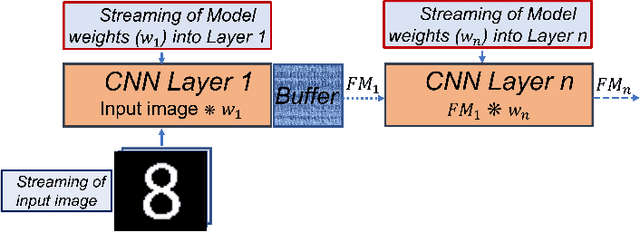
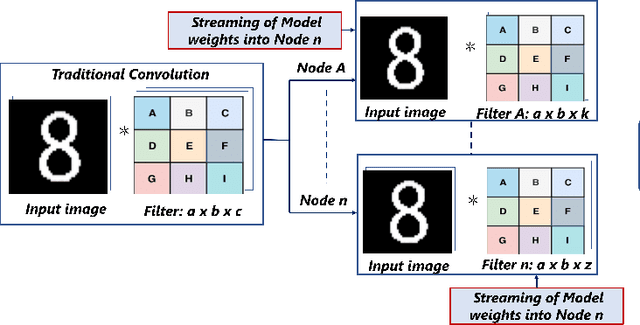
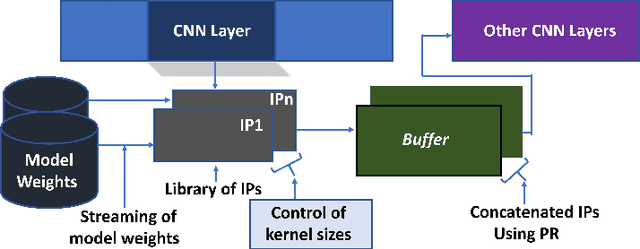
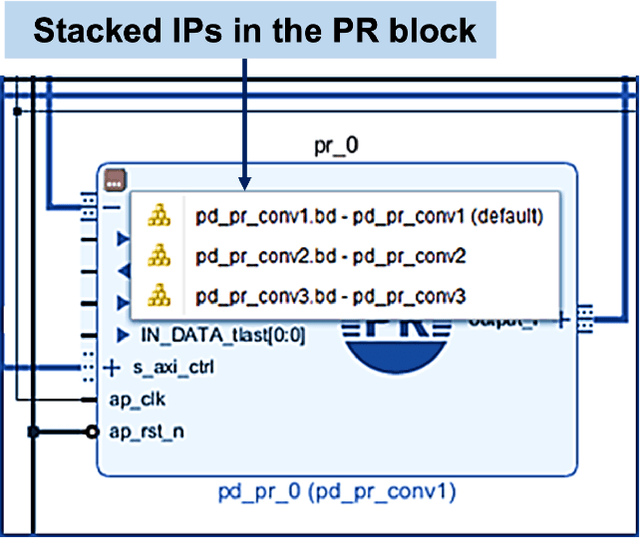
Abstract:Deep learning applications have achieved great success in numerous real-world applications. Deep learning models, especially Convolution Neural Networks (CNN) are often prototyped using FPGA because it offers high power efficiency and reconfigurability. The deployment of CNNs on FPGAs follows a design cycle that requires saving of model parameters in the on-chip memory during High-level synthesis (HLS). Recent advances in edge intelligence require CNN inference on edge network to increase throughput and reduce latency. To provide flexibility, dynamic parameter allocation to different mobile devices is required to implement either a predefined or defined on-the-fly CNN architecture. In this study, we present novel methodologies for dynamically streaming the model parameters at run-time to implement a traditional CNN architecture. We further propose a library-based approach to design scalable and dynamic distributed CNN inference on the fly leveraging partial-reconfiguration techniques, which is particularly suitable for resource-constrained edge devices. The proposed techniques are implemented on the Xilinx PYNQ-Z2 board to prove the concept by utilizing the LeNet-5 CNN model. The results show that the proposed methodologies are effective, with classification accuracy rates of 92%, 86%, and 94% respectively
Security Analysis of Capsule Network Inference using Horizontal Collaboration
Sep 22, 2021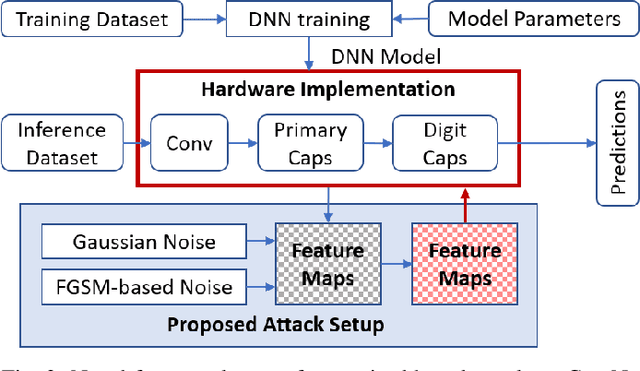



Abstract:The traditional convolution neural networks (CNN) have several drawbacks like the Picasso effect and the loss of information by the pooling layer. The Capsule network (CapsNet) was proposed to address these challenges because its architecture can encode and preserve the spatial orientation of input images. Similar to traditional CNNs, CapsNet is also vulnerable to several malicious attacks, as studied by several researchers in the literature. However, most of these studies focus on single-device-based inference, but horizontally collaborative inference in state-of-the-art systems, like intelligent edge services in self-driving cars, voice controllable systems, and drones, nullify most of these analyses. Horizontal collaboration implies partitioning the trained CNN models or CNN tasks to multiple end devices or edge nodes. Therefore, it is imperative to examine the robustness of the CapsNet against malicious attacks when deployed in horizontally collaborative environments. Towards this, we examine the robustness of the CapsNet when subjected to noise-based inference attacks in a horizontal collaborative environment. In this analysis, we perturbed the feature maps of the different layers of four DNN models, i.e., CapsNet, Mini-VGG, LeNet, and an in-house designed CNN (ConvNet) with the same number of parameters as CapsNet, using two types of noised-based attacks, i.e., Gaussian Noise Attack and FGSM noise attack. The experimental results show that similar to the traditional CNNs, depending upon the access of the attacker to the DNN layer, the classification accuracy of the CapsNet drops significantly. For example, when Gaussian Noise Attack classification is performed at the DigitCap layer of the CapsNet, the maximum classification accuracy drop is approximately 97%.
 Add to Chrome
Add to Chrome Add to Firefox
Add to Firefox Add to Edge
Add to Edge